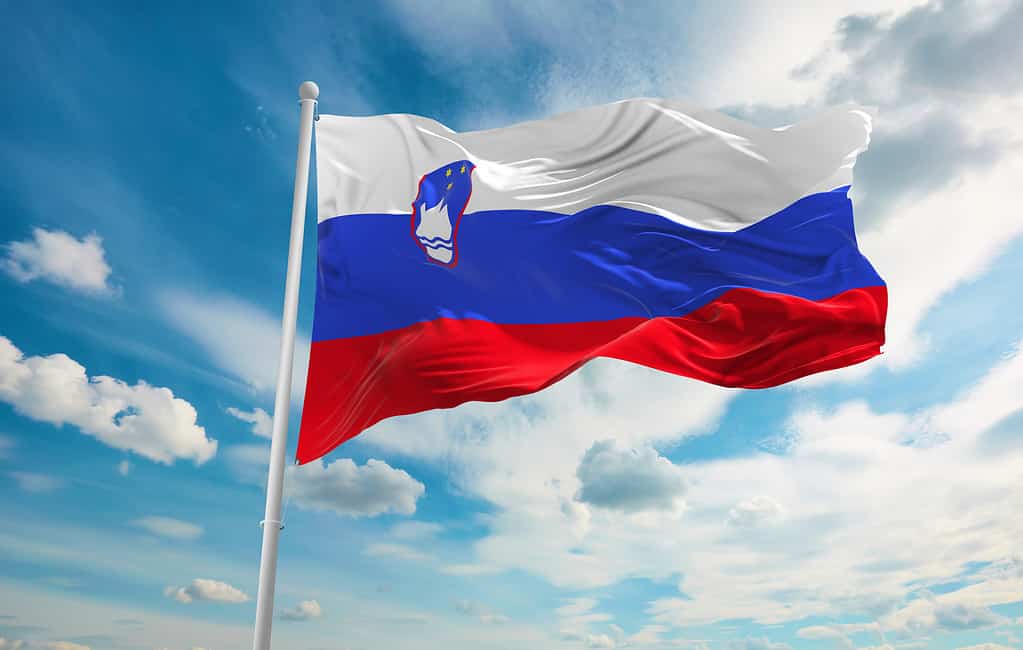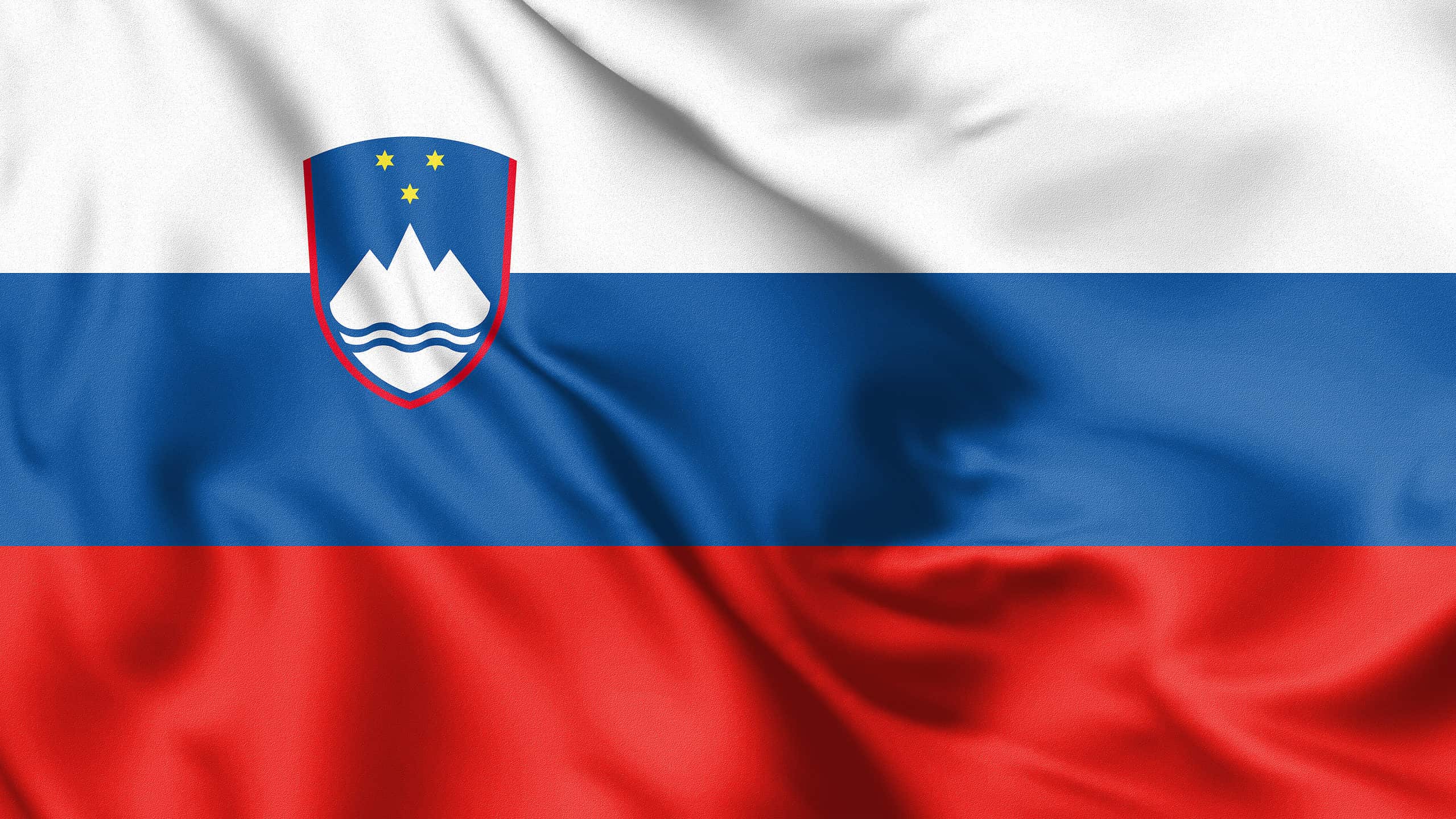The flag of Slovenia features the country’s crest of arms. It sits in the center of the white and blue stripes on the hoist side. Slovenia’s flag is a tricolor with equal-width white (top), blue (middle), and red (bottom) horizontal bars. The coat of arms features three six-pointed golden stars from the coat of arms of the Counts of Celje. This great Slovene dynasty residence of the late 14th to early 15th centuries is positioned in an inverted triangle above the shield. Mount Triglav, Slovenia’s highest peak, is depicted in white against a blue background. In today’s post, we will explore the history, meaning, and symbolism of the flag of Slovenia in detail.
Flag of Slovenia History
On April 7, 1848, a group of students led by liberal nationalist activist and poet Lovro Toman erected the first Slovenian flag in Ljubljana. Austrian authorities adopted it as Carniola’s official banner against strong opposition from Germany. The Austrian government generally suppressed non-German emblems across the Empire, but this regional acknowledgment was an exception.
Because they feared that banners with more than three colors would incite a revolt, Austria’s central government mandated that regional flags and the Empire’s flag be confined to two colors each. Hence, the Slovene people were overjoyed when the Carniolan tricolor of white, blue, and red was officially adopted as the symbol of United Slovenia. At some point in the latter half of the nineteenth century, the Slovenian tricolor superseded all other national symbols in significance.
Even after Slovenia became part of Yugoslavia, the flag with its bright colors was still easily recognizable. While it was prohibited and its users were punished by the fascist government, it was used by Slovenes of the Julian March who had been subjugated to Italy during the interwar period. The Slovenian coat of arms designed by Marko Poganik was officially accepted after the country declared its freedom from Yugoslavia. On June 27, 1991, a flag was selected after months of discussion on the new Republic’s coat of arms.
Flag of Slovenia Meaning

The flag of Slovenia was adopted in 1991 and features the country’s crest of arms in the center of the blue and white stripes on the hoist side.
©Maxim Studio/Shutterstock.com
Design
The flag of Slovenia features the country’s crest of arms in the center of the white and blue stripes on the hoist side. The Slovene flag, or Zastava Slovenije, has three equal horizontal bands of white (at the top). In addition, the flag features blue in the middle, and red at the bottom. The coat of arms features three six-pointed golden stars organized in an inverted triangle. These stars are obtained from the coat of arms of the Counts of Celje. It also features a white silhouette of Mount Triglav, Slovenia’s tallest mountain, against a blue background.
While it shares a similar pattern with the national flag, the shape of the civil and state ensign for ships is unique (2:3 instead of 1:2). A national flag is used as an ensign for vessels up to 24 meters (79 feet) in length. The horizontal tricolor of white, blue, and yellow is the coat of arms. These colors are also reflected in the naval jack.
Colors
The flag’s three colors and three stars are taken from the medieval coat of arms of the Duchy of Carniola. This also featured a mountain and two other symbols (red, blue, and yellow). The coat of arms of Slovenia is featured on the white, blue, and red Slovene national flag. In order, the flag’s colors are white, blue, and red. In addition, the flag is divided into thirds horizontally, with each color occupying one-third.
Flag of Slovenia Symbolism
Three equal horizontal bands make up the Slovenian flag. The white stripe is at the top, followed by the blue, and finally the red. The three points of Slovenia’s highest mountain, Triglav, the two blue stripes, and the three five-pointed yellow stars make up the dynasty coat of arms, which is centered on the flag’s left side between the white and blue stripes.
Those three stars represent the 15th-century army of Duke Celje of Slovenia, which fought for Slovenian independence. Austria-Hungary attempted to abolish the Duchy’s independence but ultimately failed. The blue swaths on the sleeve are meant to symbolize the country’s waterways. The Panslavist national colors are blue, white, and red. Because Russia was an autonomous Slavic entity in the mid-19th century, they were initially acknowledged by the Slavic countries and were influenced by the Russian flag. Several flags, including those of numerous Slavic countries, feature the colors that represent Slavic solidarity and independence.
Thank you for reading! Have some feedback for us? Contact the AZ Animals editorial team.








